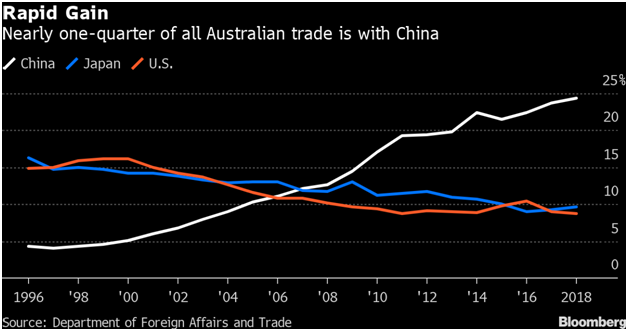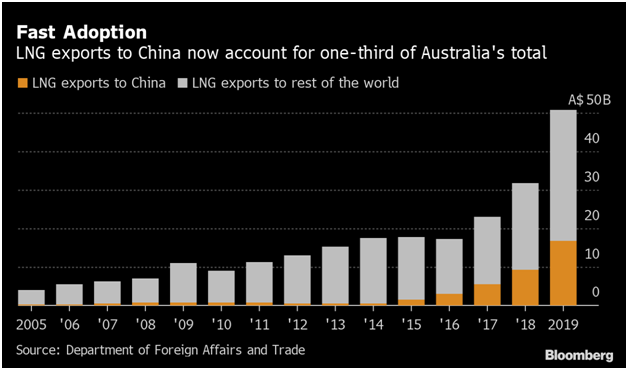Let’s admit. The start of the new decade hasn’t gone as we all had planned. From putting our social life to pause to ruining career, the Corona Virus pandemic had impacted our lives like no disaster has ever did. Since it’s a worldwide phenomenon, every government and every economy has been affected. If we talk about Australia, we realize the number of unemployment is rapidly skyrocketing. According to Westpac economists, the expected unemployment rate in Australia with a rise up to 11% by June. That’s happening because Australian government has mandated the majority of the workplaces to close. It is believed that when the crisis is over, every economic sector will snap back into place. However, it will take time for the Australian economy to recover from the fiscal impact of the COVID-19 pandemic crisis.
The effect of the Corona Virus pandemic on Australia’s economic growth:
COVID-19 that originated from China has now made its way to over 200 countries of the world. Every economy has been shaken to the core. However, for Australia, things can be way worse than they are for the rest of the world. Why? First of all, just like the rest of the world, Corona Virus is rapidly spreading in Australia. Secondly, Australia is considered the biggest trading partner of China. It is a vital part of the supply chain of a huge number of all consumer products that China manufactures.
According to Mathan Somasundaram, a market portfolio strategist at Blue Ocean Equities, the world sees Australia as a proxy for China. If anything happens to their economy, our economy is almost equally impacted. If China’s GDP rate goes down, it will also disrupt the rate of GDP growth for Australia.
The sectors of the economy where the impact of the crisis will be felt the most:
Even though the entire Australian economy has somehow come down to a halt, certain areas will be impacted by the crisis more than the others. These areas include:
China is the number one consumer of Australian export goods. These goods include:
- Liquefied natural gas (LNG)
- Iron ore
- Energy products
- Metallurgical coal
- Thermal coal
According to the data collected by the Australian Bureau of Statistics, in December, the merchandise exported to China by Australia accounted for 13.89 billion Australian dollars. That made around 34% of the total exports made in December 2019.
According Shane Oliver, head of investment strategy and chief economist at AMP Capital, China is the biggest consumer of Australian export products, among which some of the most common goods include coal and iron ore. It trades in around one third of the Australian exports. Since Australian export sector relies greatly on China’s economic conditions, it will have a great impact if the factories in the state remain closed.
He further explains how the demands for coal and iron will decline if the factories remain idle in China. He also predicted that the Australian economy will face a 0.1% decline from January to March. However, the market condition will start to rebound in the coming three months.
Education is another major economic sector that has been heavily dented by the outbreak of corona virus pandemic. It has led the Australian government to toughen the restrictions on the arrival of students from China. The outcome of this action is that the majority of the Chinese student enrolled within the Australian universities might not be able to join the classes once the Australian summer break has ended. As a result, it is expected that the universities all across Australia will incur a considerable dent in their margins and operating revenues.
For Australia, education makes a huge chunk of the export industry. More than 38% of the international students enrolled in the Australian universities belong to the Mainland China. The ratio is much higher in some of the universities.
The international students account for up to one third of all the university enrollments in Australia. This makes them one of the lucrative income streams for the Australian education sector. If the travel restrictions are extended it is likely for the universities to experience financial strain.
According to Reuters report, the Australian government has decided to ease some of its restrictions. However, it isn’t yet confirmed. This action is expected to pave the way for the Chinese student to return and resume their academics.
Since it’s not clear whether or not the international students will return for the new term, some of the Australian universities have delayed the start of their new semester. This decision seems justifiable given the relatively lower rate of international enrollment as well as exchange programs.
According to the Australian Bureau of Statistics, within just last year up till September, More than 8.66 million visitors toured different parts of Australia. Almost 1.33 million among these tourists were from China. Last year visitors from all across the world spent a total of over A$45 billion on their trips to Australia. Chinese tourist accounted for more than 27% of the total revenue generated by the tourism industry of Australia.
Travel ban to prevent the further spread of Corona Virus has caused the Australian tourism industry to suffer billions of dollars of loss. A huge number of Chinese tourists make their way to Australia to celebrate Lunar New Year holidays.
How long it will take for the Australian economy to recover from COVID-19 crisis?
It might take
Australian economy a decade to recover from the economic fallout caused by corona virus pandemic. The Federal Government has decided to support the failing economy by releasing a $17.6 billion stimulus. However, according to experts it will not make a lot of difference.
How COVID-19 crisis is going to impact the business and consumers confidence?
Economists believe that the spread of Corona Virus resulting in major lockdowns would make consumers and businesses to lose confidence if the pandemic lasts for long. This irrational selling and buying behavior might disrupt the economic growth even more. It might even lead to severe economic consequences.
According to Chief economist Brendan Rynne, the reason behind the rocked confidence of consumers and businesses is the extensive stockpiling of toilet paper and hand sanitizers as a consequence of the panic created by the social media. If the crisis prevails, it is very likely that the households and the stakeholders will lose confidence in the economy. If that happens, the panic will ensue and lead to the crash down of the financial markets. This will further result in the collapse of asset pricing and the credit being dried up.
How the government can restore the lost confidence?
The stimulus measures taken by the government can curb the damage to some extent. However, it still needs to convince the businesses and consumers that the package can be scaled up if needed. When the consumers know that the package can be extended as per their needs they will find it more credible.
It has also been revealed, if this package wasn’t introduced it was very likely for the Australian economy to face recession. That’s because the GDP generated in 2020 is expected to be significantly lower. This package will prove to be a ray of hope since it will ensure that the economy doesn’t descend into more severe crisis as a result of loss of confidence among businesses and consumers.
How economic stimulus package can support the drowning economy?
Restoring the confidence of the general public in economy is important to eliminate the sense of panic from the society. This is the reason why the Australian government has introduced a stimulus package that worth $189 billion. This package has been introduced to control the growing unemployment rate and to keep businesses in the business. The package includes:
- $17.6 billion released as the Government’s first economic stimulus package
- $90 billion from the RBA
- $15 billion from the Government for providing easier financial access
- $66.1 billion in economic support package
This package is introduced to support:
- Households including retirees, sole traders and casuals with income support
- Financial assistance for the businesses to keep them from firing their employees
- Financial support to keep businesses in the business
- Regulatory protection to support businesses
Strategies that could help businesses to minimize the financial loss:
Apart from utilizing the financial support offered by the government the companies can take some measures to survive the Covid-19 crisis. According to reports, there are various measures that can save businesses from incurring more loss. Some of them include:
- Preparing to meet high demands from consumers
- Trying to keep the stock full
- Rethinking sales strategies
- Engaging the consumers using social media platforms
Final words:
Covid-19 is rapidly spreading and has influenced every single sector of the economy. Just like the rest of the world, the Australian economy has also come crashing down. According to reports, things can even worsen with time. Three of the most impacted sectors of the economy include exports, education and tourism. The growing rate of unemployment has created a sense of panic among the citizens. It has also been revealed that it might take over ten years for the economy to recover from the current crisis. The government of Australia has introduced Stimulus Packages to restore consumers and businesses’ faith in the economy. This relief package is predicted to control the rate of unemployment and to keep the businesses in the business.
Published on: December 23, 2020



